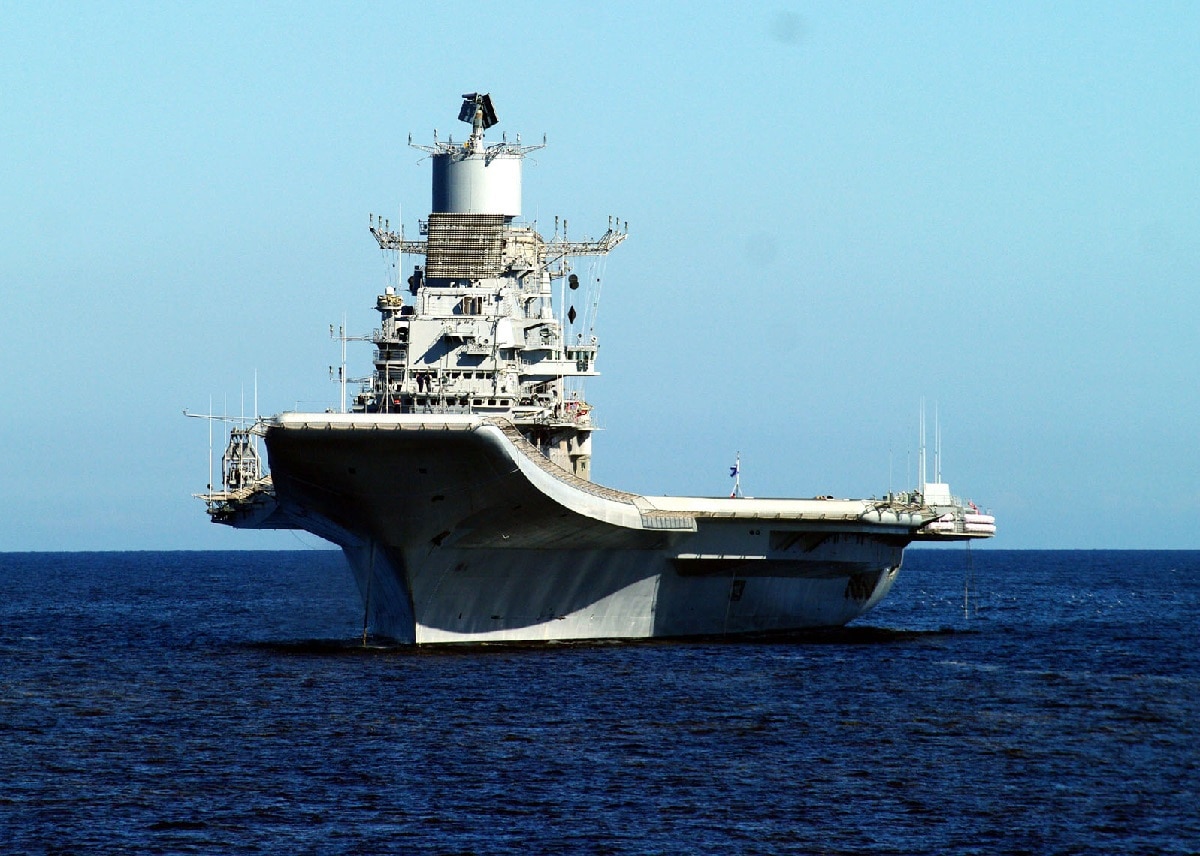Should India Have Buyer’s Remorse For the Purchase of a Russian Carrier? – This is an important year for India and its navy. In addition to marking its 75th year of independence, India will also commission its first indigenously-designed and domestically-constructed aircraft carrier, INS Vikrant (Hindi for “Courageous”). Production of the carrier has been ongoing for more than two decades.
Until the construction of this flattop, India has relied on “hand-me-downs” carriers – with it previously operating two retired Royal Navy aircraft carriers. That included the former HMS Hercules (INS Vikrant) and HMS Hermes (INS Viraat) each of which was laid down during the Second World War. Transferred to the Indian Navy during the Cold War, each went on to see roughly 30 additional years of service with the latter only formally decommissioned in March 2017.
It could be argued that while older carriers, the Royal Navy built good ships, and New Delhi “got its money’s worth.”
Sadly, the same can’t be said of the INS Vikramaditya (R33), which could be compared unfavorably to a used car – and in this case, New Delhi bought someone else’s problem, namely Russia.
A Floating “Lemon”
New Delhi and Moscow have long maintained a strategic partnership and Russia remains the largest supplier of military hardware to India. It could be argued that it has been a lopsided partnership, however, and the Vikramaditya is just the biggest example of why the Indian Navy should have considered other options.
For reasons that still boggle the mind, New Delhi opted to buy a Cold War-era carrier – technically an aircraft cruiser – from a nation that has never shown any aptitude for operating such warships. Yet, India went ahead of the deal and almost certainly has regretted it ever since.
It truly did buy a problem warship.
Designed as an improved variant of the Kiev-class – and even considered a separate class due to various improvements that included a phased array radar, extensive electronic warfare installations, and an enlarged command and control suite – the hull was laid down in 1978 at Nikolayev South (Shipyard No.444) in Ukraine. She was launched in 1982 but wasn’t commissioned into the Soviet Navy in December 1987.
That long delay in commissioning was largely caused by software bugs in the new command and control system. She was one of the first Soviet warships to utilize such an advanced computer network system, but it took years to fix all the problems.
That should have been the first of many red flags to come.
Meet the Baku – the Bad News Aircraft Carrier
Originally commissioned as Baku, she only served in the Soviet Navy for just four years, from 1987 to 1991. Then with the dissolution of the Soviet Union, she was renamed Admiral Flota Sovetskogo Soyuza Gorshkov and continued to serve with the Russian Navy until she was decommissioned in 1996 due to high operating costs. The carrier had only recently returned to service after undergoing repairs for a boiler room explosion that had occurred two years earlier.
Unable to maintain the warship, Moscow looked for foreign buyers and in January 2004, New Delhi showed interest – apparently too much interest.
In fact, negotiations dragged on for a few years, until India agreed to pay $2.3 billion – reportedly three times the original asking price! In the end, Moscow agreed to make several improvements, and the carrier subsequently underwent an extensive upgrade at Sevmash Enterprise.
Enter the INS Vikramaditya Aircraft Carrier
Rechristened INS Vikramaditya, she was commissioned into the Indian Navy on November 16, 2013, and officially entered service the following June. Throughout much of the Cold War, India was really the only regional power in the Indo-Pacific to operate a true carrier, but it has since lost that advantage as China’s People Liberation Army Navy (PLAN) has put considerable resources towards its own carrier development.
INS Vikramaditya likely does little to tip the scales in India’s favor.
Instead of a modern carrier, India essentially overpaid for a warship that might have otherwise been sent to the scrap yard. New Delhi has pulled out all stops to keep the warship well-maintained, yet it has been plagued by problems in the past several years. In 2016, two people were killed when a toxic gas leak occurred during maintenance work in the carrier’s sewage treatment plant compartment, while a fire broke out in the boiler room of the aging carrier in April 2019, resulting in the death of a naval officer from smoke inhalation. Several others were injured after fighting the blaze.
A second fire occurred in May 2021, and while there wasn’t serious damage and no one was hurt, it is just another sign that perhaps India should think of replacing this floating money pit. It is unfortunate there is no return policy for warships!
Wisely, India has learned its lessons and has shown that it will likely never again need to buy another nation’s retired carrier. It can now build its own!
Now a Senior Editor for 1945, Peter Suciu is a Michigan-based writer who has contributed to more than four dozen magazines, newspapers and websites. He regularly writes about military hardware, firearms history, cybersecurity and international affairs. Peter is also a Contributing Writer for Forbes.

